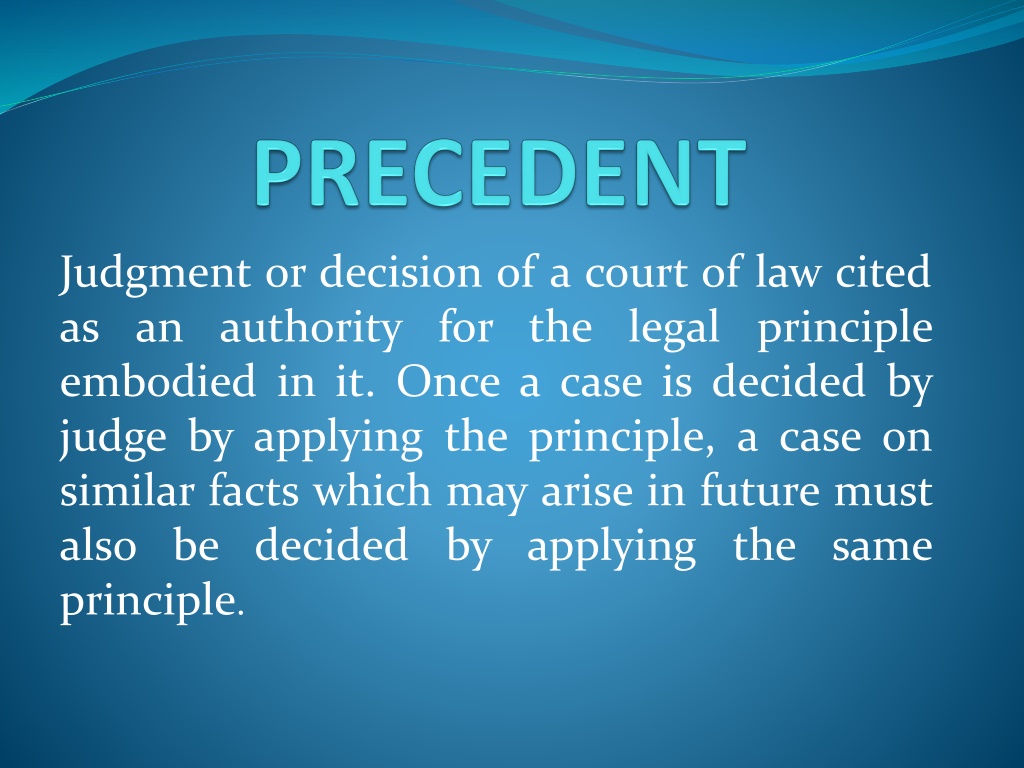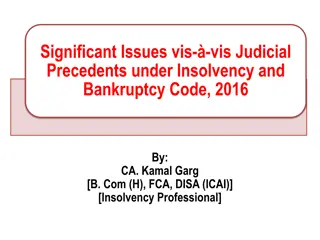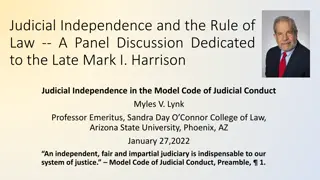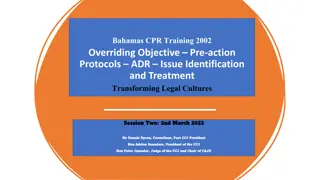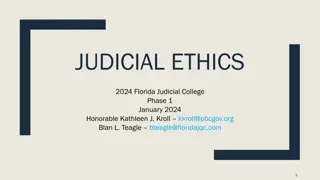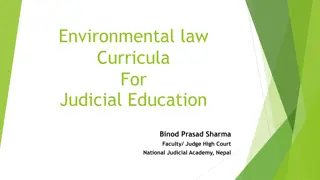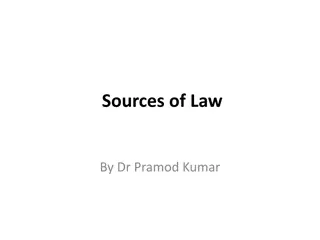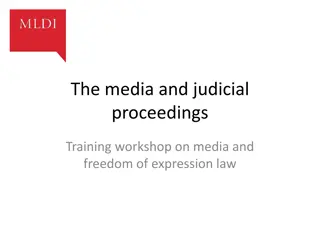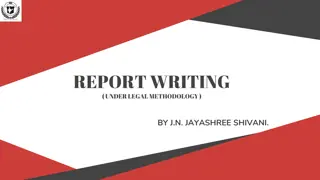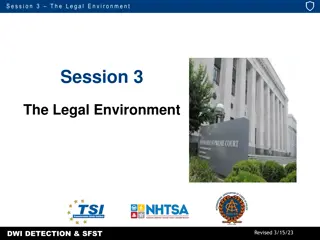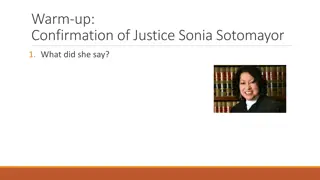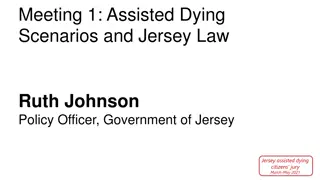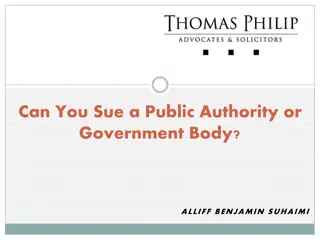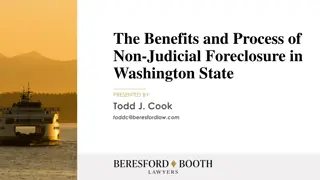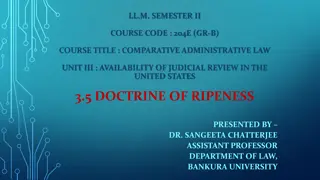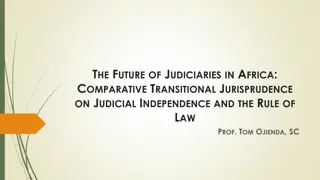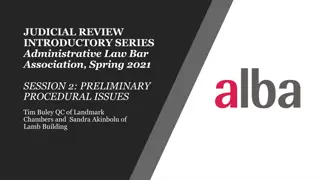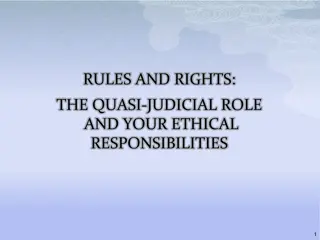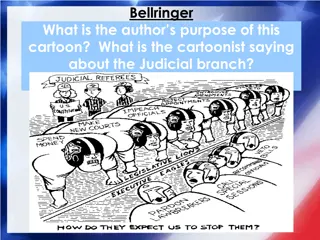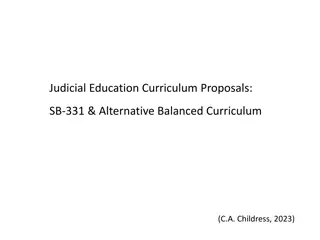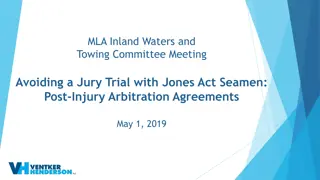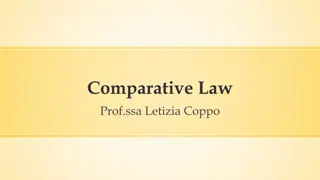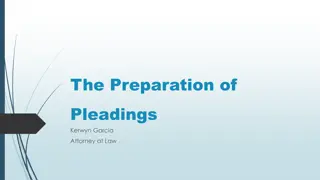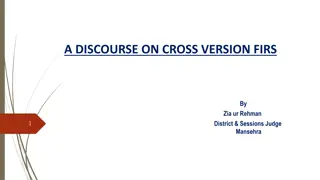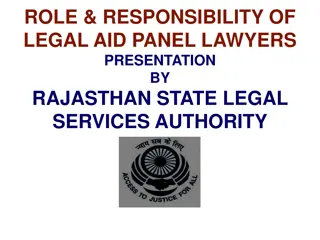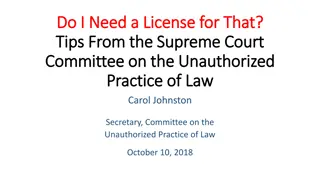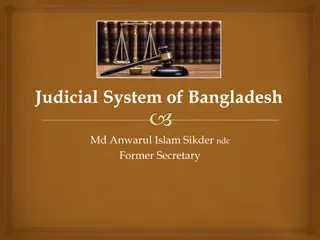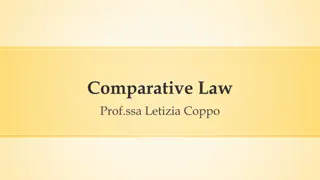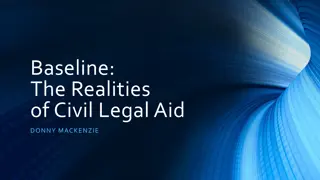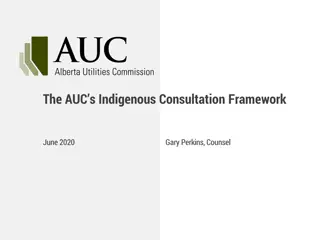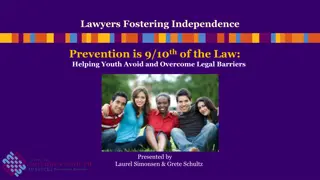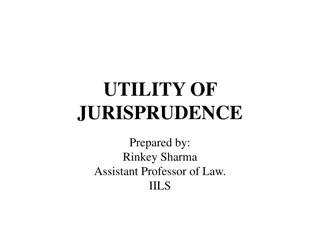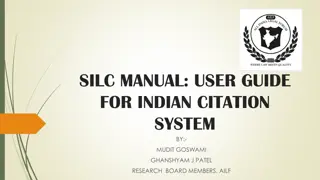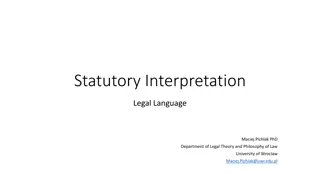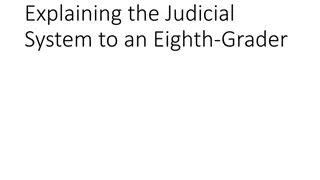Understanding Judicial Precedents and Their Significance in Legal Practice
Judicial precedents are decisions of a court of law that serve as legal authorities for future cases with similar facts. They establish principles to be followed by lower courts until overruled. Examples from England and India illustrate the importance and applicability of precedents in the legal system, emphasizing the role of higher courts in shaping legal interpretations.
Download Presentation

Please find below an Image/Link to download the presentation.
The content on the website is provided AS IS for your information and personal use only. It may not be sold, licensed, or shared on other websites without obtaining consent from the author. Download presentation by click this link. If you encounter any issues during the download, it is possible that the publisher has removed the file from their server.
E N D
Presentation Transcript
Judgment or decision of a court of law cited as an authority for the legal principle embodied in it. Once a case is decided by judge by applying the principle, a case on similar facts which may arise in future must also be decided by applying the same principle.
DEFINITIONS John Gray: a judicial precedent covers everything said or done which furnished a rule forsubsequent practice. Keeton: a judicial precedent is a judicial decision to which authority has in some measure been attached. Jeremy Bentham: Precedents are judge made laws . Edward Jenks: a judicial precedent is a decision by a competent court of justice upon a disputed point of law becomes not merely a guide but an authority to be followed by all courts inferior jurisdiction administering the same system until it has been overruled by superior court of justice or by a statute.
Precedents in England THE SUPREME COURT(established in 2009) HOUSE OF LORDS: Bound by its own decisions. PRIVY COUNCIL: Not bound by its own decisions. COURT of CIVIL APPEAL: Bound by its own decisions, and BINDING on all inferior civil courts. COURT OF CRIMINAL APPEAL: Bound by its own decisions, but with exceptions: (i) When not argued on both sides. (ii) If the matter involves liberty of citizens. HIGH COURT: Binding on all lower courts DIVISIONAL COURT: Bound by the decisions of the superior courts. (Bound by own decisions in recent times)
Precedents in India PRE-INDEPENDENCE Section 212 of the Government of India Act 1935: Law declared by Federal Court and Privy Council to be binding on courts. Mata Prasad v. Nageshar Sahai (AIR 1925 PC 272) Privy Council was the Supreme authority.
POST-INDEPENDENCE: SUPREME COURT OF INDIA HIGH COURTS LOWER COURTS Supreme Court not bound by its own decisions: Delhi Judicial Service Association, Tees Hazari Delhi v State of Gujarat AIR 1991 SC 2176
CONSTITUTIONAL PROVISIONS ARTICLE 141 The law declared by the Supreme Court shall be binding on all courts within the territory of India .
Case Laws for precedents Jamnadas Prabhudas vs Commissioner of Income-Tax AIR 1951 Bom 438 When the Supreme Court declared the law, it declared the law on the basis of the Indian Income-tax Act as it then was, & so long as the Indian Income-tax Act continued to remain in the some form, undoubtedly the law declared by the Supreme Court was the law of the land & no one can question that law. But when the Parliament amended the law, then it was the amended law that became the law of the land & not the law as declared by the Supreme Court.
Ganga Sugar Co.. Ltd., etc vs State Of U.P. & Others AIR 1980 SC 286 The Supreme Court judgments between the litigants are decisions, but they are declaratory of the law for the nation.
Nand Kishore vs State Of Punjab 1995 (6) SCC 614 This Court is a competent authority to alter the law when it declares it to be unconstitutional. Alteration does not limit alone to change therein but is inclusive of the power of striking down.
I. C. Golaknathv. State Of Punjab AIR 1967 SC 1643 There Constitution itself which prevents this Court from reviewing decisions or even to depart from them in the interest of public good. is no restriction in the its earlier
Prakash Chandra Pathak vs State Of Uttar Pradesh, AIR 1960 SC 195 Decisions even of the highest court on questions which are essentially questions of fact, cannot be cited governing the decision of other cases which must rest in the ultimate analysis upon their own particular facts. as precedents
LANDMARK PRECEDENTS IN INDIA Vishaka and others v State of Rajasthan AIR 1997 SC 3011 Prevention of Sexual harassment of Women at Workplace. MC MEHTA v Union Of India AIR 1987 SC 1086 Absolute and Strict liability in hazardous industries.
Vineet Narain v Union of India (1998) 1 SCC 226 Seven Principles governing the Public Life (1) Selflessness (2) Integrity (3) Objectivity (4) Accountability (5) Openness (6) Honesty (7) Leadership
People's Union for Civil Liberties (PUCL) v. Union of India & others, Writ Petition 196 of 2001. The Supreme Court explicitly established a constitutional human right to food and determined a basic nutritional floor for India's impoverished millions.
Pee Pee Publishers & Distributors vs Dr. Neena Khanna, 197 MANU/DE/3877/2010 ".....The international conventions and norms are to be read into them in the absence of enacted domestic law occupying the field when there is no inconsistency between them. It is now an accepted rule of judicial construction that regard must be had to international conventions and norms for construing domestic law when there is no inconsistency between them . (taken from the Vishakha s judgment)
Union of India Vs. Raghubir Singh, AIR 1989 SC 1933. Megh Singh Vs. State of Punjab, AIR 2003 SC 3184. Suganthi Suresh Kumar Vs. Jagdeeshan (2002)2 SCC 420.
